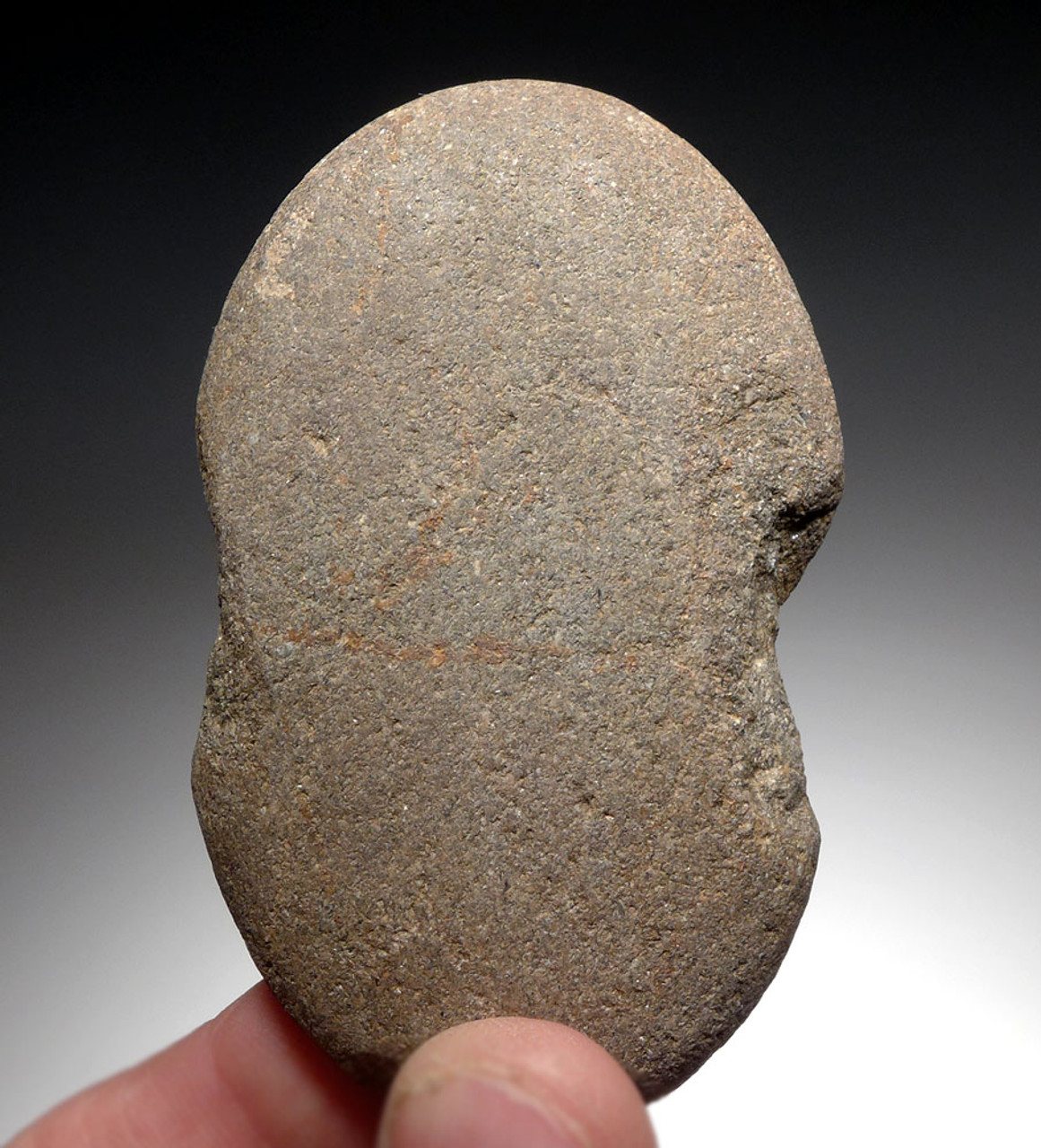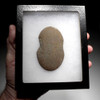Product Description
SEE MORE EUROPEAN NEOLITHIC TOOLS
Found during a river dredging project, this flaked indented stone cobble dates back from the Mesolithic through the Neolithic Period of Europe. It was found in the Garonne River in Toulouse, France. Called 'Poids de Peche' by European collectors, this specimen is one of the earliest forms of Neolithic fishing net sinker weights. Later designs were drilled and pierced through the stone but these earliest forms were simply flaked on opposing edges. The stone was lashed across the two indentations and affixed to the fishing net to weigh it down. Original ancient sediment and minerals can be seen deep in the micro-crevices, a testament to its authenticity and extreme age. The link below is an excellent paper with diagrams and images of similar specimens.
HISTORY
Fishing nets have been used widely in the past, including by stone age societies. The oldest known fishing net is the net of Antrea, found with other fishing equipment in the Karelian town of Antrea, Finland, in 1913. The net was made from willow, and dates back to 8300 BC. Recently, fishing net sinkers from 27,000 BC were discovered in Korea, making them the oldest fishing implements discovered, to date, in the world. The remnants of another fishing net dates back to the late Mesolithic, and were found together with sinkers at the bottom of a former sea. Some of the oldest rock carvings at Alta (4200–500 BC) have mysterious images, including intricate patterns of horizontal and vertical lines sometimes explained as fishing nets.
Fishing nets are well documented in antiquity. They appear in Egyptian tomb paintings from 3000 BC. In ancient Roman literature, Ovid makes many references to fishing nets, including the use of cork floats and lead weights. In Norse mythology the sea giantess Rán uses a fishing net to trap lost sailors. References to fishing nets can also be found in the New Testament. Jesus Christ was reputedly a master in the use of fishing nets.
Fishing nets have not evolved greatly, and many contemporary fishing nets would be recognized for what they are in Neolithic times. However, the fishing lines from which the nets are constructed have hugely evolved. Fossilised fragments of "probably two-ply laid rope of about 7 mm diameter" have been found in one of the caves at Lascaux, dated about 15,000 BC. Egyptian rope dates back to 4000 to 3500 BC and was generally made of water reed fibers. Other rope in antiquity was made from the fibers of date palms, flax, grass, papyrus, leather, or animal hair. Rope made of hemp fibres was in use in China from about 2800 BC.
 US DOLLAR
US DOLLAR
 EURO
EURO
 AUSTRALIAN DOLLAR
AUSTRALIAN DOLLAR
 CANADIAN DOLLAR
CANADIAN DOLLAR
 POUND STERLING
POUND STERLING
















